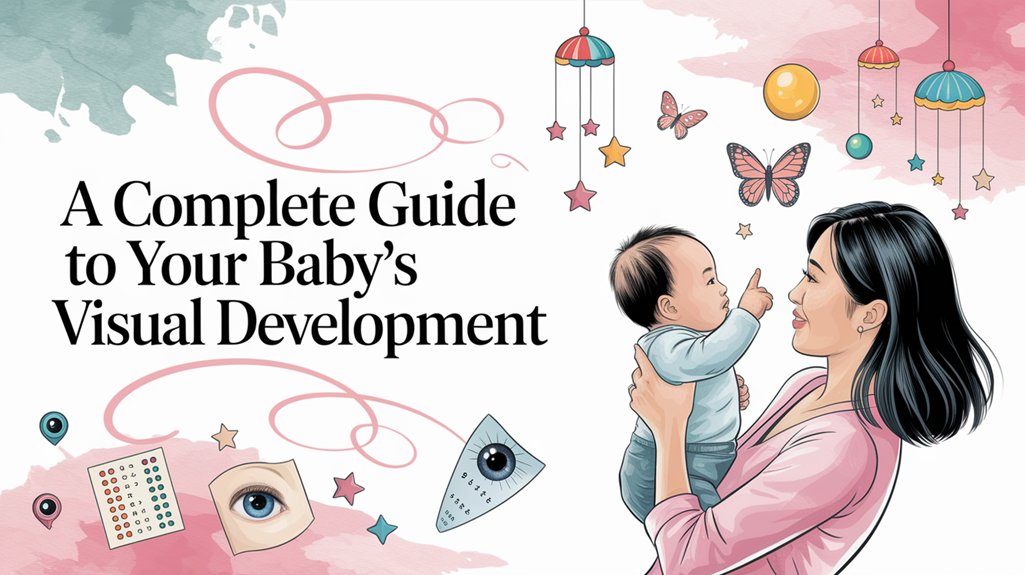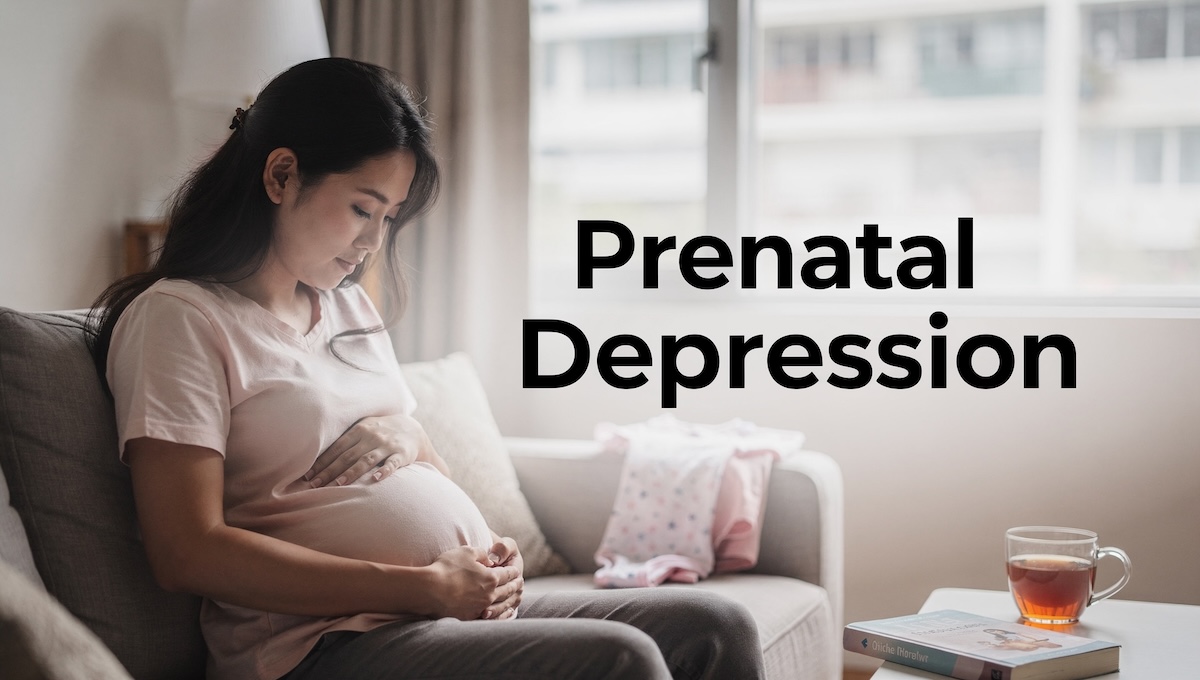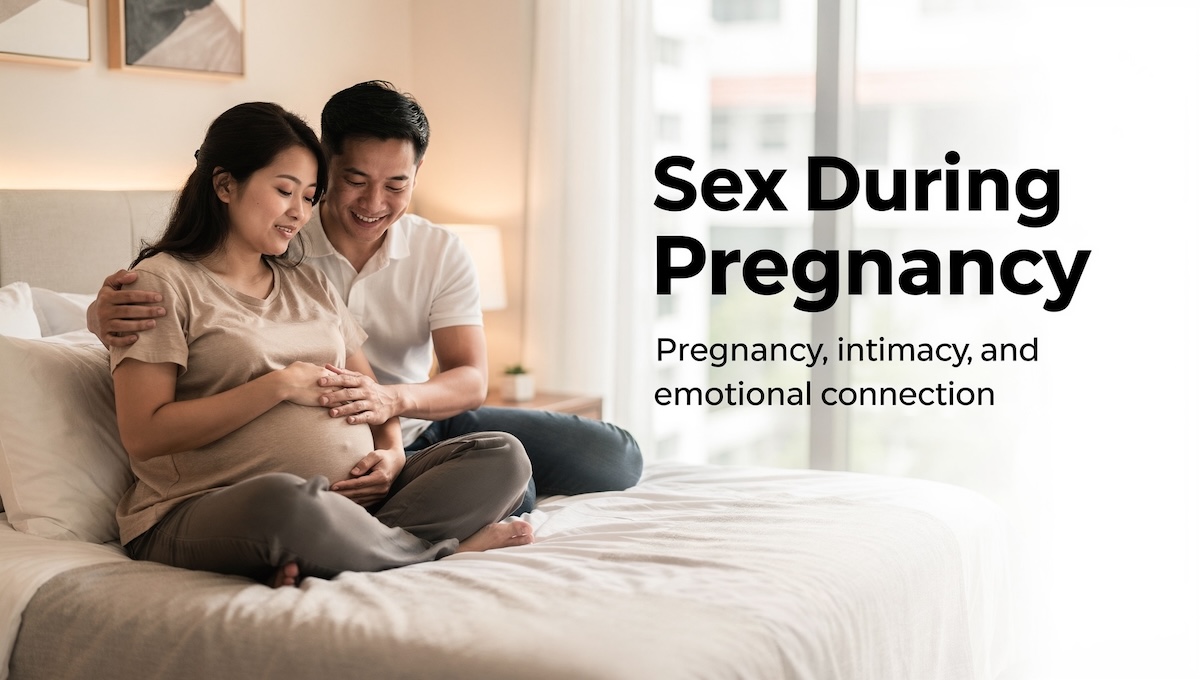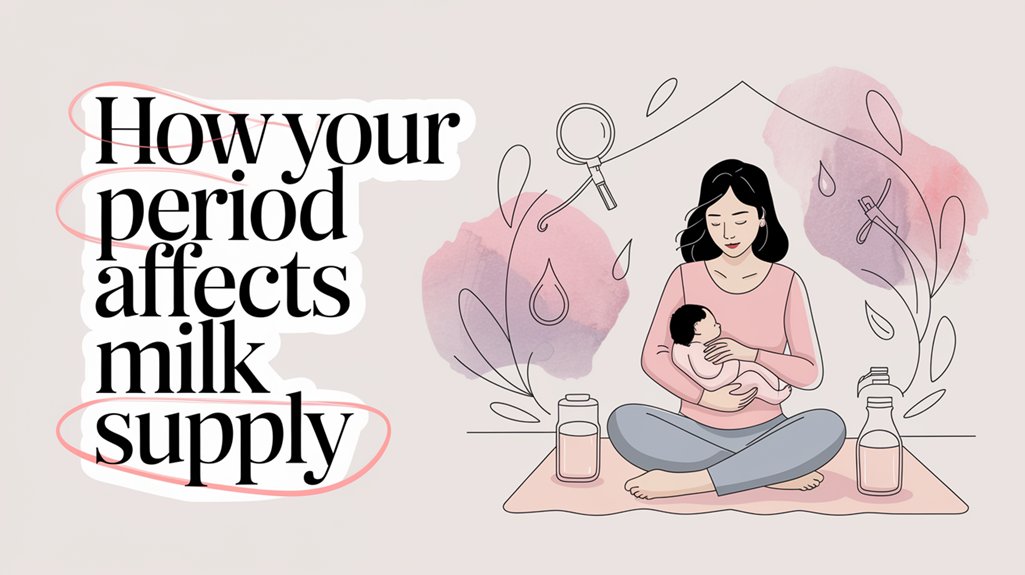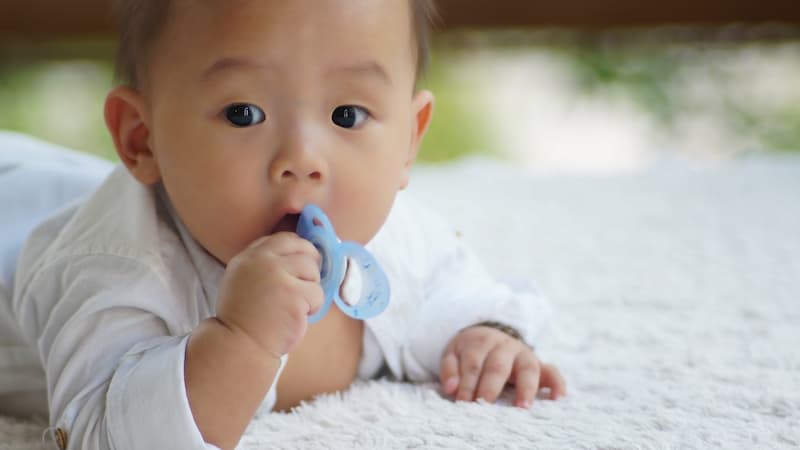When your newborn baby first opens their eyes, they’re beginning a remarkable visual journey. Baby’s vision undergoes significant changes throughout the first 12 months of age, with each stage marking important milestones in visual development. Newborn vision is quite limited compared to adult vision, but it develops rapidly during the first year of life. This article explains how your baby’s vision changes from birth to their first birthday, what to watch for, and how you can support healthy eye development.
Newborn Vision at Birth

One month newborn baby with wide eyes
At birth, newborn babies’ visual abilities are just starting to form. Newborns can see light, basic shapes, and faces, but their vision is still quite blurry. They are only able to focus on objects directly in front of them, about 12-14 inches away from their face—conveniently the distance between a baby’s eyes and a parent’s face during feeding.
Your newborn is able to see:
- Bright lights
- Basic shapes
- High-contrast patterns
- Human faces (especially yours!)
Their vision is limited to these basics because the neural pathways between the eyes and brain are still developing. Think of it as a camera that’s still learning how to focus and process images.
Infant Vision Development Timeline
Your baby’s vision changes quickly during their first year, marking significant stages in infant vision development. Vision development milestones are closely linked to your baby’s age and specific months of age. At each stage, infants should be able to perform certain visual tasks appropriate for their age. Here’s what to expect at each month of age:
Birth to One Month
During the first month, babies begin to focus briefly on nearby faces. They prefer looking at faces over other objects and can distinguish between light and dark. Their eye movements might seem uncoordinated at times—this is normal as the infant’s eyes are still gaining strength.
Two Months
By around 8 weeks (2 months of age), most babies start following a moving object with their eyes. They may turn their head to follow something interesting that moves across their field of vision. At this stage, color vision begins to develop, and colour perception also begins to improve, with babies showing a preference for bright, bold colours.
Three Months
At three months, as your baby’s vision continues to develop, face recognition becomes more apparent. Babies begin to show special interest in familiar faces and can maintain eye contact for longer periods. They are also able to notice specific shapes and patterns.
Five Months
A major milestone occurs around 5 months when babies develop depth perception. This 3D vision allows them to judge distances fairly well. At this stage, babies should be able to reach for objects with improved accuracy, as they can now perceive how far away something is. You might notice your baby reaching for objects with better coordination as they can now perceive how far away something is.
Six Months: Depth Perception
By six months, a baby can see the differences between objects and start to identify them. It’s important to monitor your baby’s eyes for any signs of vision problems as they continue to develop. Their colour vision continues to improve, and they can now recognize familiar objects even when only partly visible. Hand-eye coordination also becomes more refined.
Twelve Months
By twelve months of age, children are able to see almost as clearly as adults. At this stage, they can spot very small objects, recognize familiar people from across a room, and have good depth perception for crawling and walking.
Signs of Healthy Visual Development
How can you tell if your baby’s vision is developing properly? Parents should observe your baby’s eyes for these signs:
- Eyes that appear clear and bright
- Eyes that follow moving objects or people
- Good eye contact during feeding
- Reaching for objects with increasing accuracy as they grow
- Interest in looking at different things in their environment
- Appropriate response to visual stimuli (smiling at familiar faces, etc.)
To help support healthy visual development, parents can engage your baby’s eyes with colorful toys, gentle movement, and regular interaction, and consult a doctor if they notice anything unusual.
Potential Vision Problems to Watch For
While most babies develop normal vision, it’s important to know the signs that might indicate eye and vision problems in infants and children:
- One eye that turns in or out consistently while the other looks straight ahead (strabismus)
- Excessive tearing that isn’t related to crying
- Extreme sensitivity to light
- White or gray areas in the pupil
- Eyes that constantly move or shake
- No response to visual stimuli by 3 months
- No tracking of moving objects by 4 months
If you notice any of these signs, contact your pediatrician or a pediatric eye specialist. A pediatrician can perform an eye exam or refer your child for a comprehensive eye examination. Early detection of eye and vision problems in infants and children is crucial for effective treatment and healthy visual development. If you have any question or concern about your baby’s vision, or need more information, consult your healthcare provider for guidance.
Supporting Your Baby’s Visual Development
You can help your baby’s visual system and eye health develop in several ways: These activities are designed to help your baby’s vision develop, supporting their ability to explore and understand the world around them.
Provide Visual Stimulation
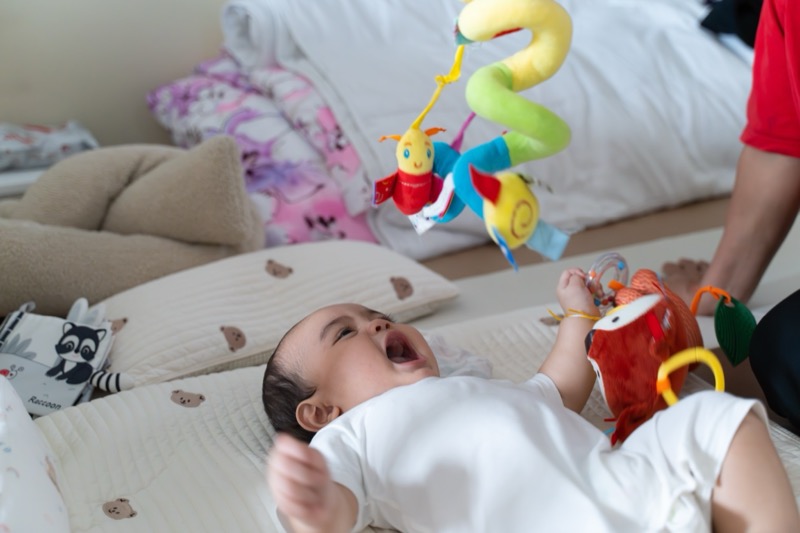
Baby enjoy playing with bright toys
- Stimulate your baby’s eyes with different patterns and colors to support visual development
- Use black and white patterns for newborns to stimulate infant vision
- Introduce colourful toys as they grow older to help your baby’s eyes track and recognize new colors
- Change your baby’s position and surroundings throughout the day
- Place mirrors where your baby can see themselves
Play Vision-Building Games

Baby is happy to play peekaboo with mummy
- “Peek-a-boo” helps develop visual memory and supports infant vision development
- Follow-the-object games improve tracking skills
- Reaching games enhance hand-eye coordination
Create a Visually Rich Environment

Newborn baby lying down and looking at the hanging toys
- Hang mobiles with contrasting colors over the crib to engage your child’s eyes
- Place pictures at their eye level
- Take them outside to see different environments
- Use books with simple, high-contrast images
Remember that vision and brain development are closely linked. Visual stimulation doesn’t just help their eyes—it helps build neural connections that benefit overall development.
For more information on creating a visually stimulating environment for your baby, consult reliable sources or seek advice from a healthcare professional. The information provided here is for reference only and does not replace professional medical advice. Early detection of vision problems is important for your newborn’s healthy development.
Importance of Regular Eye Examinations
Pediatricians screen infants for vision problems at regular checkups, and it is important that infants receive an eye exam and eye examination at specific months old as recommended by their pediatrician. These screenings typically occur at the following ages:
- At birth
- At 6 months of age
- At 12 months of age
- At 3 years of age
- At 5 years of age and older
However, comprehensive eye assessments by specialists are recommended if:
- You notice any signs of potential vision problems
- There’s a family history of childhood eye issues
- Your baby was premature or had other birth complications, as premature infants may have different visual development milestones
Early detection of eye problems through regular eye exams and eye examinations can prevent or reduce their impact on a child’s development. Some conditions, if caught early enough, can be corrected completely.
Final Thoughts
Your baby’s vision journey from fuzzy newborn sight to clear, coordinated vision is fascinating to witness, marking significant stages in infant vision development. By understanding this process, you can better support their development and quickly identify any concerns.
Remember that while all babies follow the same general pattern of visual development, each child progresses at their own pace. What matters most is that they continue to show improvement over time.
By providing a visually stimulating environment and staying alert for any potential issues, you’re giving your baby the best chance for healthy vision throughout childhood and beyond.
